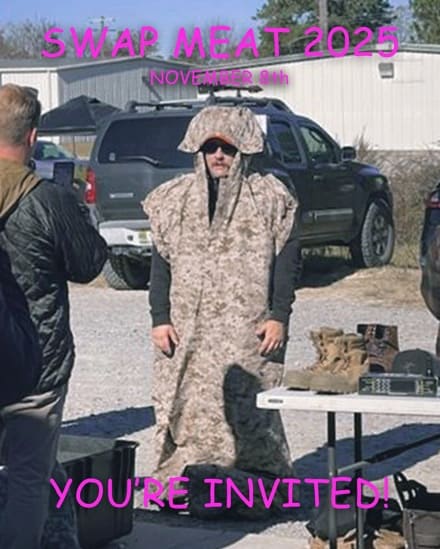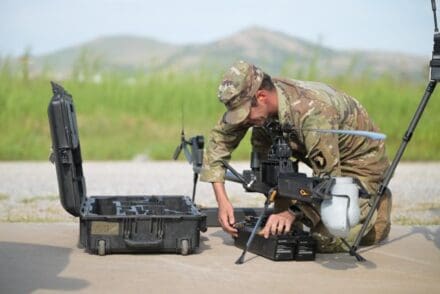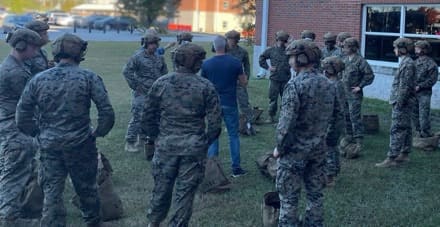Colby Jenkins, performing the duties of the assistant secretary of defense for special operations and low-intensity conflict, outlined his priorities for the future of the special warfare community while delivering remarks today during Special Operations Forces Week 2025 in Tampa, Florida.
Jenkins cautioned the audience that America’s adversaries are converging across regions and “the thresholds between peace and conflict.”
“We do not need another threat briefing; we need action — focused and unrelenting,” Jenkins said.
He added that such action recently came in the form of guidance from Defense Secretary Pete Hegseth, who kicked off SOF Week 2025 with keynote remarks, May 6. Hegseth said his focus is on defending the homeland, deterring Chinese aggression while maintaining a free and open Indo-Pacific region and shifting burdens to partners and allies.
“SOF delivers persistent presence, asymmetric advantage and strategic effects across all three priorities every day, everywhere,” Jenkins said, adding that SOF is also the only force in the Defense Department that delivers across all three lines of effort.
He then listed five priorities aimed at meeting Hegseth’s guidance:
- Designing the future force to prevail in future conflicts;
- Maximizing the performance and resilience of SOF personnel;
- Ensuring training and readiness meet future needs;
- Aligning capability development to strategic priorities; and
- Strengthening resource oversight and the institutionalization of accountability.
Regarding the first priority concerning force design, Jenkins said there needs to be a shift from static formations optimized for crisis response and counterterrorism to “adaptable, tailorable, multidomain SOF formations” meant to prevail in high-end conflict.
“The future of SOF is relentless: smaller teams, faster decisions, smarter systems [and] harder targets,” Jenkins said.
As for performance and resilience maximization when it comes to SOF personnel, Jenkins said future operators will need to be agile, resilient, physically and mentally capable, and able to thrive in isolated, high-pressure environments.
“We cannot afford to simply maintain the old standards,” he said. “We must sharpen them, modernize them and expand them without losing the warrior ethos that define[s] our special operations.”
He also said the goal will be to build and preserve a force where human performance, and not just that of technology, will prove to be a critical advantage over adversaries.
“Because in the end, it is not the weapon, the drone, or the system that wins the contest. It is the person who knows when and how to use all of that technology and who refuses to quit; that person secures victory for us,” Jenkins said.
On the topic of ensuring training and readiness meet future needs, Jenkins said the battlefield of the future will be more complex, contested and ambiguous than anything SOF has faced before.
Because of that, he said, future SOF will have to operate in challenging environments while integrating cyberspace and electronic warfare. They will also need to conduct irregular warfare alongside allies, partners and indigenous forces across all phases of competition and conflict.
“Traditional training models and infrastructure focused primarily on physical skills and kinetic action will not be enough,” Jenkins said, adding that it will be necessary to rethink training for the future threat environment.

Regarding aligning capability development to strategic priorities, Jenkins said “innovation for innovation’s sake” isn’t enough.
“We must drive innovation with purpose, laser-focused on building the capabilities that allow our forces to impose costs, create dilemmas and deny advantages to our adversaries,” he said.
Jenkins added that SOF must harness artificial intelligence to accelerate decisive advantage.
On the final priority, Jenkins said strengthening resource oversight and institutionalizing accountability are necessary in an era of increasing operational demands and constrained budgets.
“Resources are not just dollars on a spreadsheet; they are the fuel for readiness, resilience and victory,” he said, adding that every dollar spent must sharpen readiness, enhance capability or increase strategic leverage.
“We have an incredible opportunity right now to make sure that our enterprise has the resources that it needs and can divest of operations or resources or platforms that we no longer need. So, let’s take advantage of that,” Jenkins said, adding that no funds should be “wasted on bureaucracy that does not deliver warfighting advantage.”After highlighting future priorities, Jenkins appealed to the SOF community for their own ideas regarding shaping the future.
“Whether you are in industry … government or the SOF community itself, you are part of this effort,” he said. “Help us develop the capabilities that give our operators the advantage they need at the speed they need.”
Jenkins said that winning future fights will not come from doing more of the same but from thinking differently, acting decisively and working together.
“This is our moment to forge the future of special operations,” he said. “A future where small teams create strategic impacts; a future where resilience, adaptability and speed win the day, [and] a future where American strength and American values prevail. Now let’s get to work.”
By Matthew Olay, DOD News
Both comments and pings are currently closed.
Read the full article here








Leave a Reply